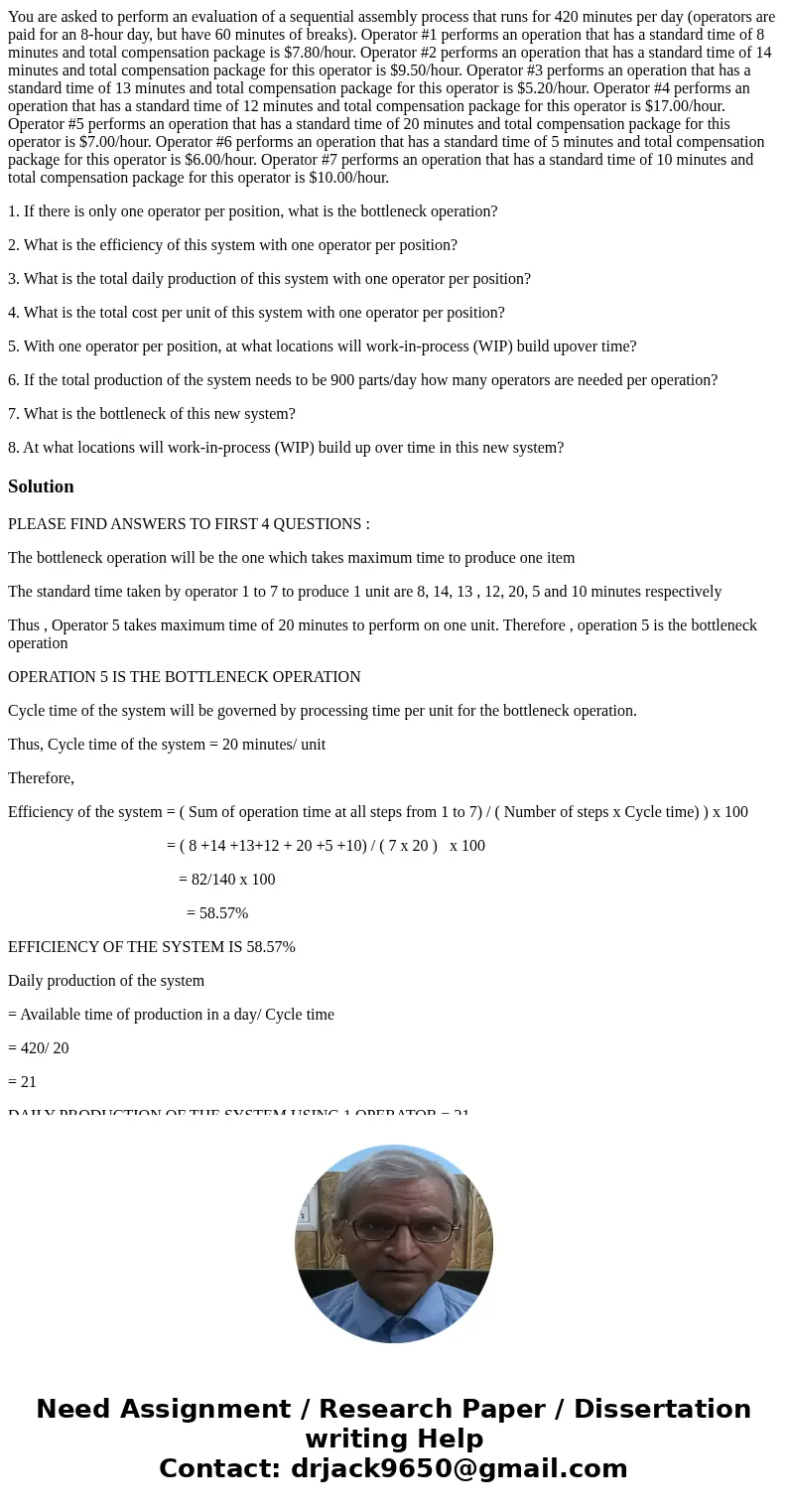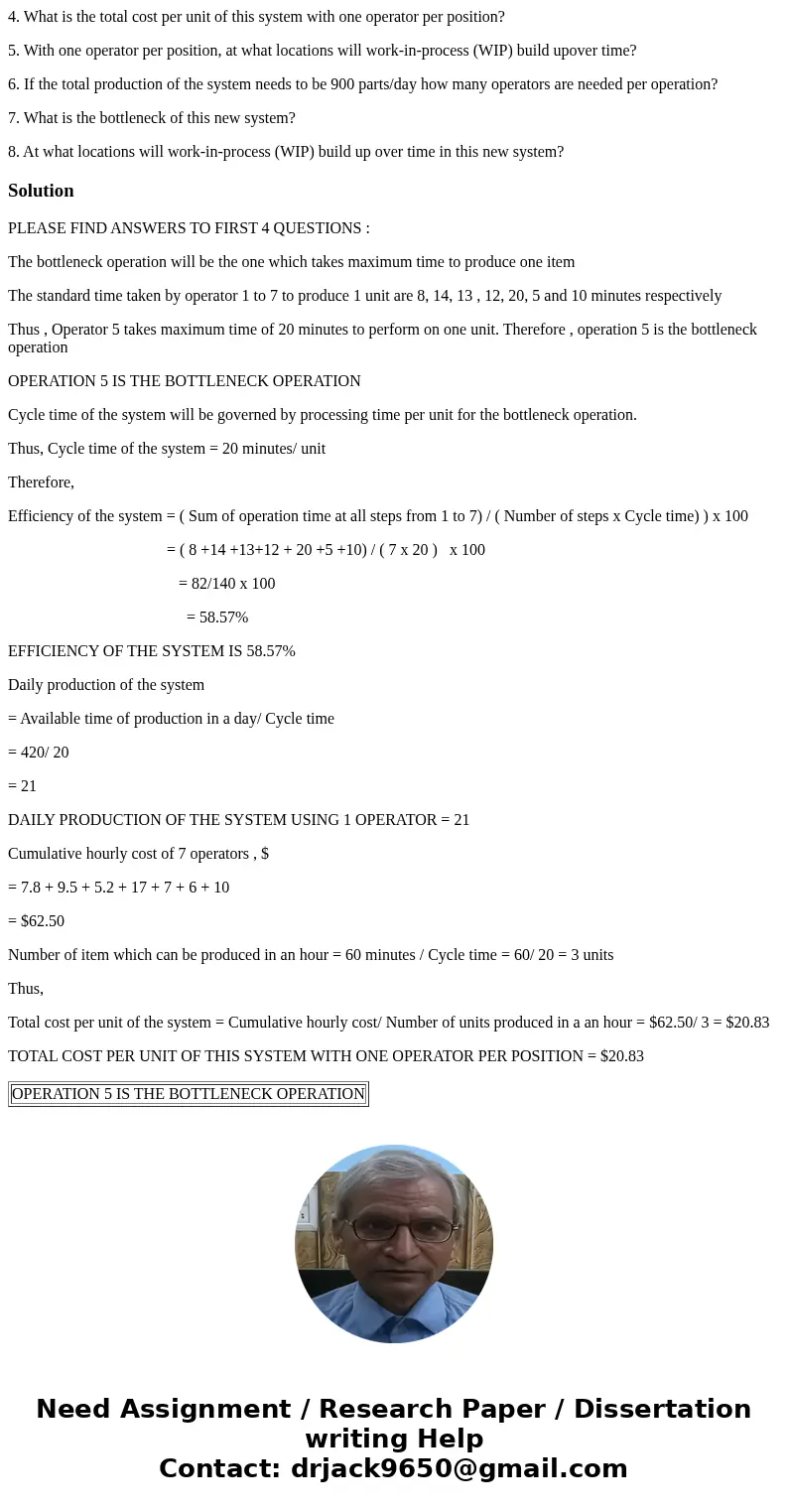You are asked to perform an evaluation of a sequential assem
You are asked to perform an evaluation of a sequential assembly process that runs for 420 minutes per day (operators are paid for an 8-hour day, but have 60 minutes of breaks). Operator #1 performs an operation that has a standard time of 8 minutes and total compensation package is $7.80/hour. Operator #2 performs an operation that has a standard time of 14 minutes and total compensation package for this operator is $9.50/hour. Operator #3 performs an operation that has a standard time of 13 minutes and total compensation package for this operator is $5.20/hour. Operator #4 performs an operation that has a standard time of 12 minutes and total compensation package for this operator is $17.00/hour. Operator #5 performs an operation that has a standard time of 20 minutes and total compensation package for this operator is $7.00/hour. Operator #6 performs an operation that has a standard time of 5 minutes and total compensation package for this operator is $6.00/hour. Operator #7 performs an operation that has a standard time of 10 minutes and total compensation package for this operator is $10.00/hour.
1. If there is only one operator per position, what is the bottleneck operation?
2. What is the efficiency of this system with one operator per position?
3. What is the total daily production of this system with one operator per position?
4. What is the total cost per unit of this system with one operator per position?
5. With one operator per position, at what locations will work-in-process (WIP) build upover time?
6. If the total production of the system needs to be 900 parts/day how many operators are needed per operation?
7. What is the bottleneck of this new system?
8. At what locations will work-in-process (WIP) build up over time in this new system?
Solution
PLEASE FIND ANSWERS TO FIRST 4 QUESTIONS :
The bottleneck operation will be the one which takes maximum time to produce one item
The standard time taken by operator 1 to 7 to produce 1 unit are 8, 14, 13 , 12, 20, 5 and 10 minutes respectively
Thus , Operator 5 takes maximum time of 20 minutes to perform on one unit. Therefore , operation 5 is the bottleneck operation
OPERATION 5 IS THE BOTTLENECK OPERATION
Cycle time of the system will be governed by processing time per unit for the bottleneck operation.
Thus, Cycle time of the system = 20 minutes/ unit
Therefore,
Efficiency of the system = ( Sum of operation time at all steps from 1 to 7) / ( Number of steps x Cycle time) ) x 100
= ( 8 +14 +13+12 + 20 +5 +10) / ( 7 x 20 ) x 100
= 82/140 x 100
= 58.57%
EFFICIENCY OF THE SYSTEM IS 58.57%
Daily production of the system
= Available time of production in a day/ Cycle time
= 420/ 20
= 21
DAILY PRODUCTION OF THE SYSTEM USING 1 OPERATOR = 21
Cumulative hourly cost of 7 operators , $
= 7.8 + 9.5 + 5.2 + 17 + 7 + 6 + 10
= $62.50
Number of item which can be produced in an hour = 60 minutes / Cycle time = 60/ 20 = 3 units
Thus,
Total cost per unit of the system = Cumulative hourly cost/ Number of units produced in a an hour = $62.50/ 3 = $20.83
TOTAL COST PER UNIT OF THIS SYSTEM WITH ONE OPERATOR PER POSITION = $20.83
| OPERATION 5 IS THE BOTTLENECK OPERATION |


 Homework Sourse
Homework Sourse